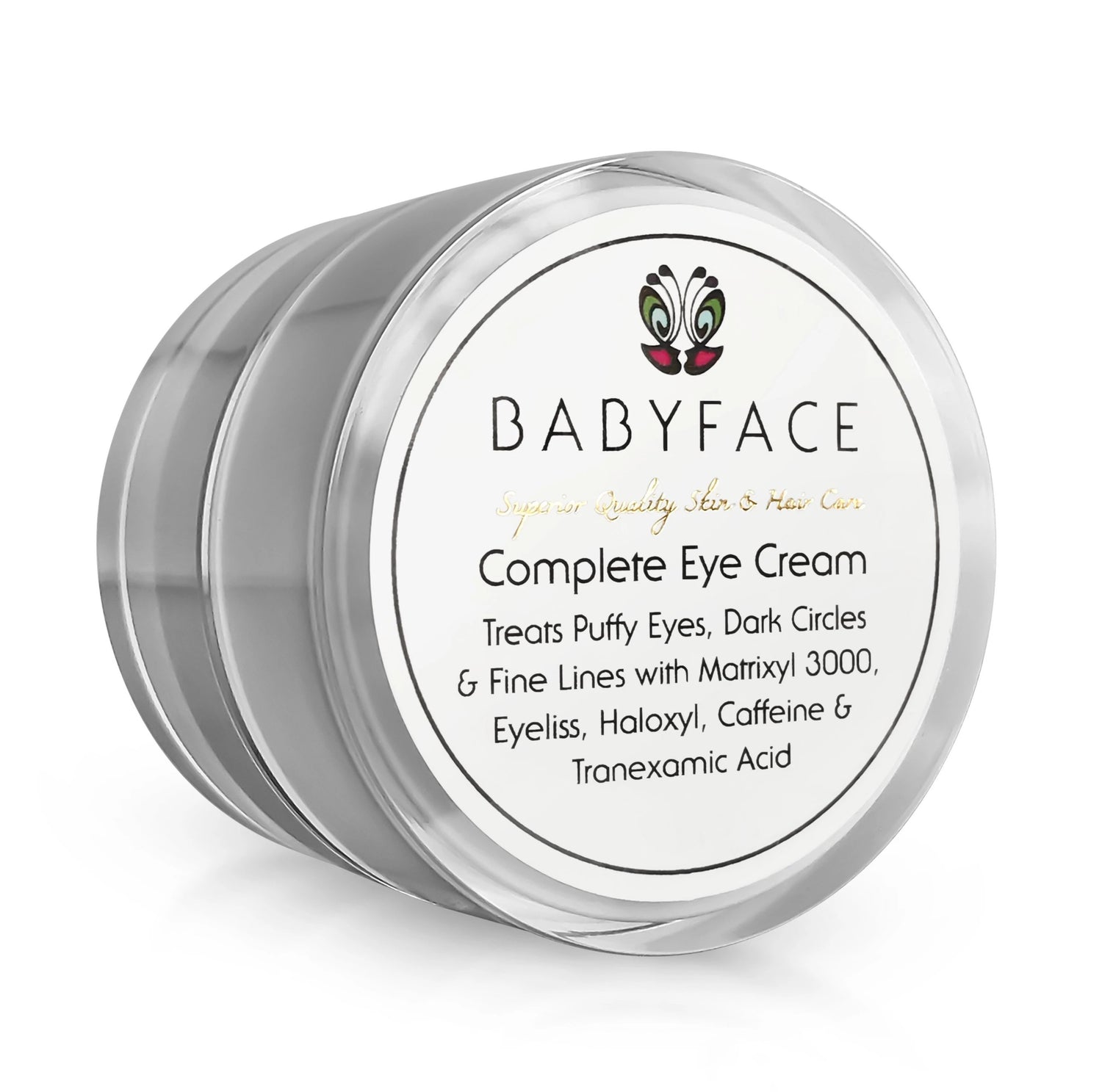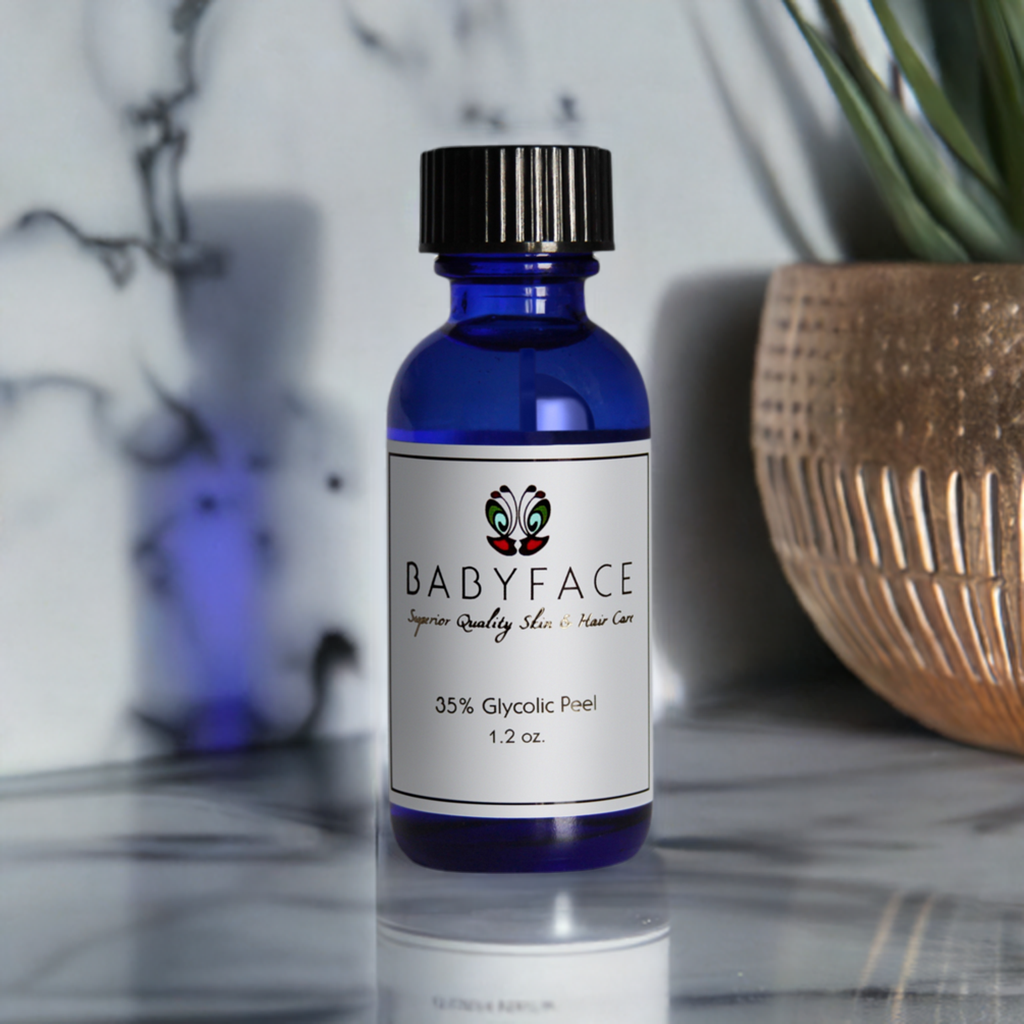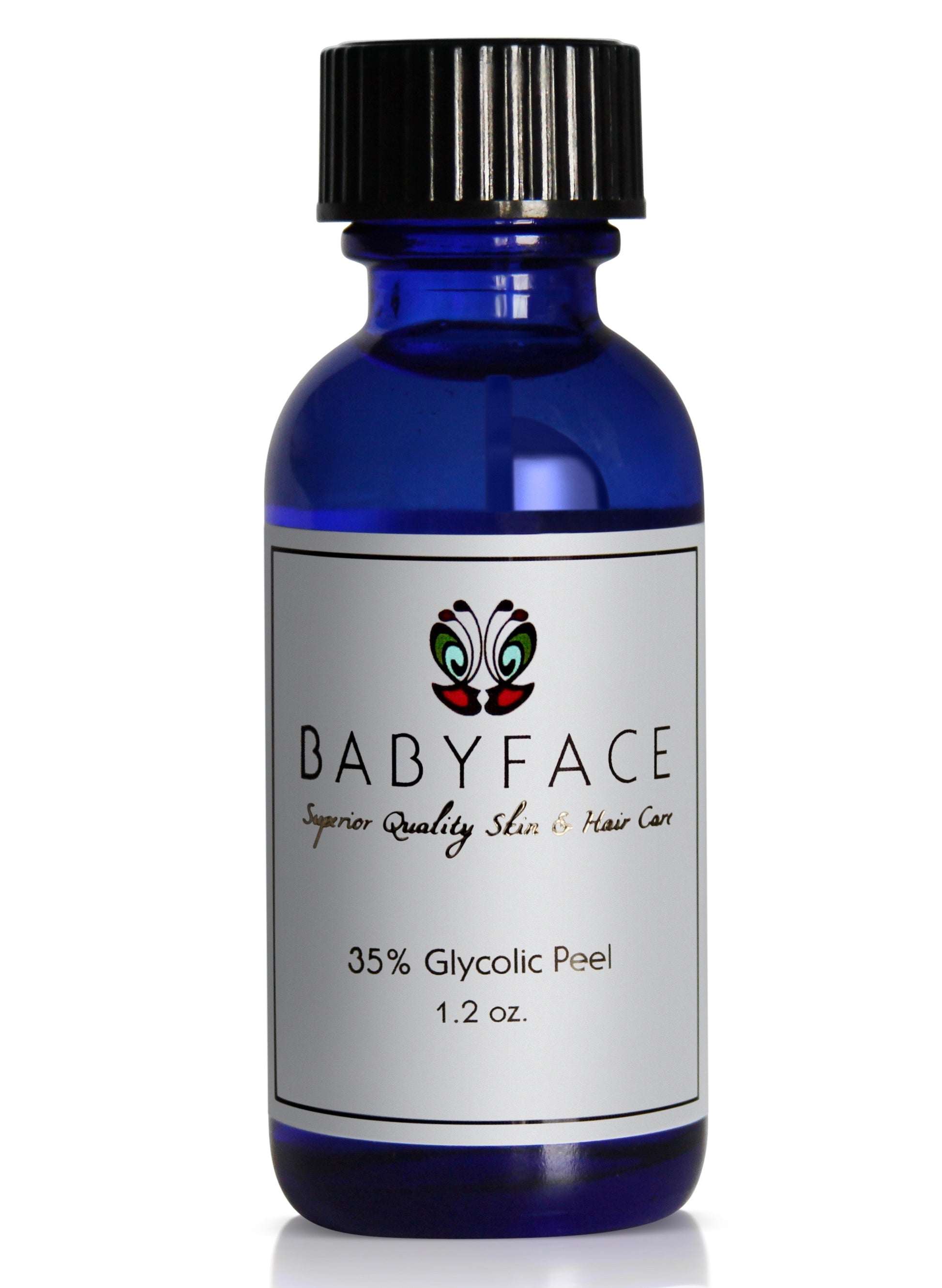Babyface
35% Glycolic Acid Chemical Peel, Anti-Aging & Dull Skin, 1.2 oz.
35% Glycolic Acid Chemical Peel, Anti-Aging & Dull Skin, 1.2 oz.
Couldn't load pickup availability
New to chemical peels? Check out this article to help you choose the best peel for your skin type.
The Babyface professional 35% Glycolic Acid Peel quickly and efficiently removes dead skin cells that clog pores and make the skin’s surface dull. This is considered a medium strength peel, and is recommended for those who are new to chemical peels, or cannot tolerate stronger peels.
Glycolic Acid Benefits & Condition Treatments:
- Resurfaces Dull Looking Skin
- Post-inflammatory Hyperpigmentation
- Stimulates Collagen Production
- Melasma
- Photoaging
- Active Acne, and Acne Scars
- Shrinks Pores, Anti-Aging
- Actinic Keratosis
- Reduces Uneven Pigment
- Unbuffered, Low pH: 1.0 – 2.0
Easy to use, and comes with full instructions. This is a professional-grade glycolic acid peel, and is professionally manufactured, same as you would receive a a Spa or Doctor’s office.
About Glycolic
Glycolic acid peels are a more gentle form of chemical peel that primarily penetrates the most superficial layer of skin. They remove blemishes, brighten skin, help to fade or eliminate sunspots, hide acne scars, diminish the appearance of fine lines and wrinkles and give the skin a healthy glow. Because they are mild, glycolic peels require less recovery time. Best results are achieved after performing multiple peels over a period of time.
Recovery Time
Due to the mild nature of glycolic acid peels, recovery time is virtually nonexistent. Slight irritation or redness may occur to the skin, but it will not be enough to disrupt normal daily activities, and can usually be covered up with make-up starting the day after the peel has been performed.
Expense
Glycolic acid peels can cost anywhere between $150 to $300 per treatment at the Dermatologist or MedSpa, with repeated procedures recommended every six weeks.
Other things to Consider
Because microdermabrasion and chemical peels both deeply exfoliate the skin, they should not be used concurrently. It is recommended that non-professionals consult a physician before deciding to use a chemical peel. Always avoid sun after a chemical peel procedure, and use sunscreen on a daily basis.
For peel instructions, please click "Usage." There you will find information on how to apply Babyface acids and peels.
Instructions for Peel Usage
Precautions
- If severe skin irritation occurs remove the product by rinsing with cool water immediately and consult a physician.
- Do not apply to irritated, very sensitive skin, or skin with open wounds or after extraction. Do not apply the peel to skin that has been waxed or shaved within 24 Hours.
- Stop using Retin A, benzoyl peroxides or other acne treatments 24 hours prior to a peel.
- Do not expose treatment area to the sun for 24 hours before or after a chemical peel, and religiously wearing sun block when going outside after a peel.
- A stinging or itching sensation is normal with a peel, and will stop once rinsed off. You can fan the area during treatment if needed for comfort.
- Neutralize: 35% peels with cool water or neutralizer. For 50% and 70% peels, always use a neutralizer.
- Slight reddening of the skin may occur for a limited period of time, especially with sensitive skin types. Redness usually subsides after a few hours but can last for several days in some cases.
Skin Patch Test
Always do a skin patch test before applying the Glycolic Peel Solution to any larger area. Behind the ear or on the inside of the elbow are recommended. A patch test should be done 2 days before you plan to do your peel, and will indicate the level of skin irritation you can expect when you perform your peel.
Application of the Product
Glycolic peels can be used on your hands, face, neck, or anywhere you have a problem with hyper-pigmentation, sun spots, age spots, acne (no open wounds), wrinkles or scar tissue. Keep away from: eyes, opening to the nose, lips, inside of mouth, hairline and eyebrows. Pay attention to creases, such as on the side of the nose or in deep wrinkles, so that those areas do not get too saturated with solution. Neutralizer Recipe: 2 TBSP sodium bicarbonate (baking soda) mixed with 1 ½ cups of cool water.
What strength should you use? For those with tough skin and heavy sun damage, the 50% or 70% may be needed for best results. For sensitive skin, please start with the 35%.
Step 1: Assemble all supplies you will need, and have them ready: timer, clean face towel, face wash, rubbing alcohol, peel solution, cotton/gauze/Q-Tips, and water for neutralizing.
Step 2: Thoroughly cleanse the treatment area with a facial cleanser, rinse and pat dry. For thicker skin types, using an exfoliating scrub for a few days before your peel will help to boost penetration and better results can be expected.
Step 3: De-fat the skin with rubbing alcohol (pure acetone works also) to remove all oil from the skin. Oil on the skin will prevent the peel from working well.
Step 4: Apply peel – see details below.
Recommended Treatment Time Limits:
Treatment #1: Product left on for up to 1 minute to assess skin’s tolerance.
Additional treatments: After 1 week you can do your next treatment and extend the time. 1-2 minutes (if skin tolerates it) or up to 3 minutes. Advanced users can add additional time; adjust time to suit your individual skin’s needs.
Peel Application:
Apply a small amount of Peel Solution to a gauze pad or you can dip a Q-Tip into the peel solution. Do not re-dip the same Q-Tip after used for application; use a new Q-Tip for each dip. Apply 1 layer of the peel solution to the area to be treated. For face, start with the forehead first, chin second, and then apply solution to the more sensitive cheeks last.
Leave on for recommended amount of time, as long as skin tolerates it. Those with sensitive skin will require less time, while those who are experienced peel users may require more time.
Step 5: Rinse 35% peel from skin with cool clean water or a neutralizer. For 50% and 70% peels, you must use a neutralizer – recipe above. Gently pat skin dry (do NOT rub skin).
Step 6: You do not need to apply anything after treatment, but if desired, you can apply our Emu Oil for soothing and rapid healing, or apply our post peel toner and/or post peel cream to soothe skin after treatment.
Final Note: Peeling is usually not common with glycolic peels, but can sometimes occur on some skin types. If your skin peels after a treatment it is very important to leave it alone, and do not pick at peeling skin – this can cause scarring. Let skin peel naturally, on its own. Pure Emu Oil can help disguise peeling, if needed.
Share




